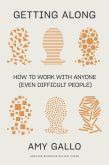A Bigger Prize: How We Can Do Better Than the Competition
(Doubleday Canada, 2014, 391 pp.)$ 32.95.
It’s the bedrock of economics, and it’s all about how you compete in markets to sell at the best price you can get, and to buy at the lowest price you can pay.
Two centuries ago, Adam Smith proved how this kind of self-interest creates advantages for entire economies. It’s the subject of his The Wealth of Nations, and we’ve trusted and relied on Smith’s Invisible Hand ever since.
Read Also

Employment Agreements Can Help Protect Your Farm
Entering into employment agreements with each of your farm employees should be at the top of every farm’s “to do” list, but caution must be exercised.
But, did Smith get it wrong?
That’s the breathtaking assertion of Margaret Heffernan’s, A Bigger Prize: How We Can Do Better Than the Competiton.
On the surface, Heffernan’s book is a collection of anti-capitalist slogans from the occupy movement.
At that level, Heffernan’s rant seems outlandish, but her book has a provocative foundation.
After all, robber baron capitalism is controlled or illegal, thank heavens. Stealing from the poor to support the rich is out of fashion. It’s not allowed, save for unprosecuted misdeeds on Wall Street. The question is therefore — what lessons can we, and especially farmers, get from a book that takes a stand against the concept of competition?
- More book reviews on Country Guide: Three timely reads for farms at a crossroads
Heffernan’s pitch is that we should co-operate instead.
If that sounds simplistic, maybe you should give her a chance to make her case.
Heffernan is a columnist for the Huffington Post and she is also a relentless self-promoter, but she musters evidence to support her plea for co-operation. It isn’t all that difficult, it turns out, to cite some stunning flops as examples of worst-case outcomes of competition.
For instance, a major global management consultancy advocated forcing employees already hired and working within companies to compete for their jobs once a year.
As a way of injecting competition into a company, it made perfect sense. But of the companies that implemented the idea, one-third went up in smoke, 18 per cent turned in disappointing results, and 16 per cent underperformed by some measures.
So, is the idea then that you need competition between farms, but co-operation within the farm itself?
Maybe. But haven’t generations of farmers kindled a bit of competition between their children or between employees to see who will rise to the top?
Heffernan’s argument for trashing competition is too brief and broad, but her basic idea is that co-operation is not the only opposite of competition. So is non-competition.
Let’s see what Heffernan’s core idea of co-operation offers agriculture. She mentions the cranberry business in Maine and says that they are grown only in the U.S. In fact, Canada is the world’s second-largest producer of the bitter fruit. She likes the idea that the cranberry folks in Maine support common research and marketing. What does that imply for other business?
Charges of anti-competitive marketing practices are often levelled against Canada’s marketing boards. But are those boards also co-operative in the best meaning of that phrase?
Canadian cheese producers’ business, which is ringfenced by high tariffs against foreign cheese, would shrivel if they had to compete directly against the world’s big cheese makers. Now look at the opposite case. Canada has no tariffs against foreign grapefruit because we have no citrus industry. So an orange or a lemon in Toronto often costs less than those in Cleveland. The free market works in the lemon biz in Canada because government price controls are absent.
On the other hand, when players in an industry collaborate to jack up or to maintain prices, to limit who can sell their goods, who can work and to set retail prices, then entities like the U.S. Federal Trade Commission and Canada’s Com- petition Bureau go to work. Price fixing (called Resale Price Maintenance in Canada) and refusal to deal is illegal in almost every established market except those protected by marketing boards or for products sheltered by tariffs.
A Bigger Prize is valuable for provocation. It makes you think about what should be regulated, what not.
In the end, the co-operative model works for undifferentiated products like fruit, which indeed does have a lot of grower co-operatives, and fails for branded goods like cars and other manufactured or value-added products. It comes down to differentiation. If a grower can produce premium sausages, they have a good chance of getting more than market price for their pork.
There are many attempts in agriculture to add value in specialty grains like spelts, heritage tomatoes and apples, and even milk-based products that are not directly board regulated.
And it’s true. When I shop, I want choice and difference. That takes competition.
This article was originally published as, “The other side,” in the September 2014 issue of Country Guide















